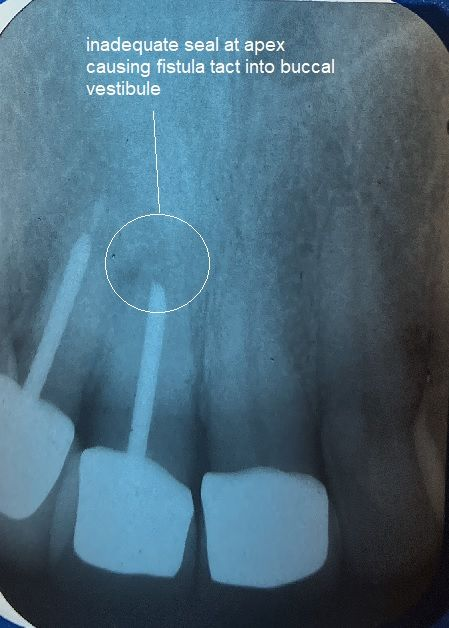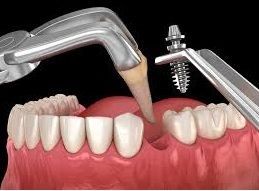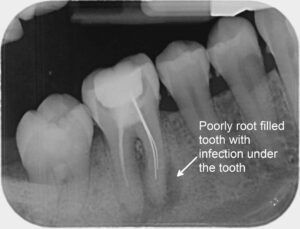A root canal procedure treats damaged or decaying teeth. If you’re wondering how to know you need a root canal, let’s look at some of the most basic signs.

A root canal is the name of a dental procedure that repairs and saves an infected or badly decayed tooth. It’s necessary when the tooth’s pulp, composed of nerves and vessels, becomes infected or damaged. During treatment, a dentist or oral surgeon will remove the pulp and clean and seal the inside of the tooth. Some people fear that their root canal will be uncomfortable or painful, but the procedure is typically no more painful than having a cavity filled. If you’re experiencing any of the telltale signs of deep tooth decay, you shouldn’t delay treatment. If you’re wondering how to know you need a root canal, let’s look at some common indicators.
Persistent Pain
If you’re experiencing persistent, sharp pain, you’re a possible candidate for a root canal. The pain might bother you all the time or come in repetitive bursts. The pain is likely to originate deep in the bone of your tooth. Alternatively, you might feel it in your face, your jaw, or even your other teeth. Tooth pain can have multiple causes. Some other possibilities include:
- gum disease
- a cavity
- referred pain from a sinus infection or another problem
- a damaged filling
- an impacted tooth that may be infected
Regardless of the cause, it’s important to schedule an appointment with your dentist as soon as possible. Early diagnosis and treatment for tooth pain will lead to a more optimistic outcome.
Sensitivity to Heat and Cold
Does your tooth hurt when you’re sipping on a cup of steaming hot coffee? What about when you eat ice cream or drink an ice-cold glass of water? The sensitivity could feel like a dull ache or a sharp, stabbing pain. If this sensitivity lingers for an extended period, you might require a root canal. Some people’s teeth are more sensitive than others. If this is the case, special sensitivity toothpaste could help. But if the pain you’re experiencing is sudden or intense, it can be an indication that the blood vessels and nerves in your tooth are infected or damaged.
Tooth Discoloration
Another way to know you need a root canal is tooth discoloration. An infection of the pulp can lead to a discolored tooth. Trauma to the tooth or the breakdown of internal tissue can damage the roots and give the tooth a grayish-black appearance. This discoloration is easier to see in a front, or anterior, tooth. A tooth might abruptly discolor for any number of reasons—amongst them, decaying or damaged tooth pulp.
Swollen Gums
Swollen gums can be a sign of an issue that requires a root canal. The swelling, like any sensitivity, can be constant or occasional. The swollen area might be tender or painful to the touch. This swelling results from the acidic waste products of dead pulp tissues, leading to swelling outside the root tip area. You might also notice a small pimple forming on your gums. This is called a gum boil, parulis, or abscess. The pimple can ooze pus from the infection, resulting in an unpleasant taste in the mouth and bad breath.
Have you noticed any of the signs of decayed or damaged tooth pulp? Have a knowledgeable, reliable professional examine your tooth. For root canal treatment in Riverview, Florida, come visit Dr. Castellano. You’ll leave with a fixed tooth and a bright, winning smile.










